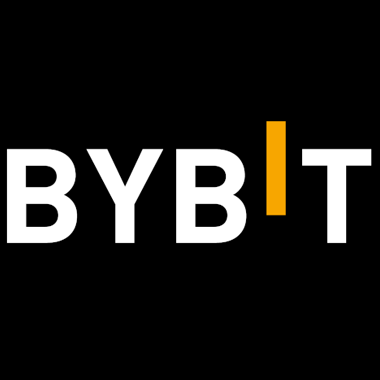Qantas Call‑Centre Breach Impacts 6 Million Customers
Published on: 08 Jul 2025

In July 2025, Australia’s flagship airline Qantas disclosed a significant cyber‑security incident affecting approximately 6 million customers. The breach, which is Australia’s largest in recent years, originated from a third‑party call‑centre platform, used by Qantas to service customer inquiries .
🔍 How the Breach Occurred
Qantas detected unusual activity on July 1, 2025, within a platform managed by an overseas vendor—reportedly based in the Philippines—that supports call‑centre functions
abc.net.au
. The breached data included:
Names
Email addresses
Phone numbers
Birth dates
Frequent Flyer numbers
Fortunately, no financial or passport information, nor login credentials or passwords, were compromised .
Officials believe the threat actor may be the cyber‑crime group Scattered Spider (a.k.a. UNC3944), known for social-engineering attacks aimed at bypassing MFA through vishing and help desk manipulation .
🛡️ Qantas’ Response
Immediately after detecting the breach, Qantas:
Contained the affected system and secured its infrastructure .
Notified regulators including the Australian Cyber Security Centre, Office of the Australian Information Commissioner, and the Federal Police .
Engaged cybersecurity specialists and launched a thorough investigation .
Issued a public apology via CEO Vanessa Hudson, and established support channels and dedicated notifications for impacted customers .
🌐 Broader Implications
This incident highlights key cybersecurity challenges:
Third‑Party Risk: Even well‑secured organizations are vulnerable if vendors lack sufficient controls .
Social Engineering: Scattered Spider has shifted focus to airlines, using methods to manipulate call‑centre employees into granting access .
Data Exploitation Potential: Personal details—though excluding credentials—can be used for targeted phishing, sim‑swap fraud, and impersonation. Experts advise users to remain vigilant .
Regulatory Momentum: Comes as Australia enforces stricter breach notification laws post-Medibank and Optus, reflecting increasing compliance expectations .
➕ Customer & Enterprise Advice
For Affected Customers:
Stay alert for phishing calls or emails pretending to be Qantas. Always verify via official channels .
Monitor your frequent flyer and other accounts for unauthorized activities.
Avoid sharing personal details in unsolicited communications.
For Organizations:
Enforce vendor risk assessments, ensuring all partners implement MFA, robust MFA reset protocols, and phishing-resistant identity verification.
Use zero‑trust architecture, limiting vendor access and segmenting critical systems.
Conduct regular security awareness training, especially for employees handling privileged access in vendor ecosystems.
✅ Conclusion
The Qantas breach serves as a potent reminder: in highly connected ecosystems, the security of partners is as important as internal defenses. As social engineering shifts to impersonating support roles, robust identity controls and vigilant vendor management are critical.
🔍 How the Breach Occurred
Qantas detected unusual activity on July 1, 2025, within a platform managed by an overseas vendor—reportedly based in the Philippines—that supports call‑centre functions
abc.net.au
. The breached data included:
Names
Email addresses
Phone numbers
Birth dates
Frequent Flyer numbers
Fortunately, no financial or passport information, nor login credentials or passwords, were compromised .
Officials believe the threat actor may be the cyber‑crime group Scattered Spider (a.k.a. UNC3944), known for social-engineering attacks aimed at bypassing MFA through vishing and help desk manipulation .
🛡️ Qantas’ Response
Immediately after detecting the breach, Qantas:
Contained the affected system and secured its infrastructure .
Notified regulators including the Australian Cyber Security Centre, Office of the Australian Information Commissioner, and the Federal Police .
Engaged cybersecurity specialists and launched a thorough investigation .
Issued a public apology via CEO Vanessa Hudson, and established support channels and dedicated notifications for impacted customers .
🌐 Broader Implications
This incident highlights key cybersecurity challenges:
Third‑Party Risk: Even well‑secured organizations are vulnerable if vendors lack sufficient controls .
Social Engineering: Scattered Spider has shifted focus to airlines, using methods to manipulate call‑centre employees into granting access .
Data Exploitation Potential: Personal details—though excluding credentials—can be used for targeted phishing, sim‑swap fraud, and impersonation. Experts advise users to remain vigilant .
Regulatory Momentum: Comes as Australia enforces stricter breach notification laws post-Medibank and Optus, reflecting increasing compliance expectations .
➕ Customer & Enterprise Advice
For Affected Customers:
Stay alert for phishing calls or emails pretending to be Qantas. Always verify via official channels .
Monitor your frequent flyer and other accounts for unauthorized activities.
Avoid sharing personal details in unsolicited communications.
For Organizations:
Enforce vendor risk assessments, ensuring all partners implement MFA, robust MFA reset protocols, and phishing-resistant identity verification.
Use zero‑trust architecture, limiting vendor access and segmenting critical systems.
Conduct regular security awareness training, especially for employees handling privileged access in vendor ecosystems.
✅ Conclusion
The Qantas breach serves as a potent reminder: in highly connected ecosystems, the security of partners is as important as internal defenses. As social engineering shifts to impersonating support roles, robust identity controls and vigilant vendor management are critical.



